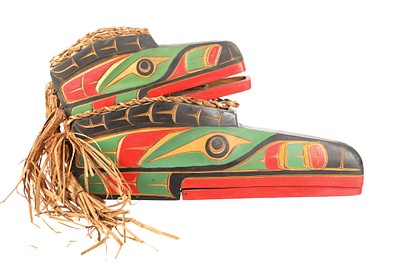Frederic Clay Bartlett (American, 1873-1953) Oil
About Auction
Jul 31, 2023 - Aug 4, 2023
Join us for our Last Chance July Timed Auction. The sale is online only and includes the passed lots from the July 29th, 2023 sale plus other added items. North American Auction Company tucker@naabid.com
- Lot Description
This is an original, signed oil on canvas by Frederic Clay Bartlett (American, 1873-1953) from the Sjaardema Art Collection. The piece has a brass plaque on the front which titles the piece as “Frisian Winter Scene” dated circa 1920. Chicago-born Frederic Clay Bartlett (1873-1953) was from a wealthy and cultured family. His father, Adolphus Clay Bartlett was a millionaire hardware and mercantile magnate and a member of the Art Institute of Chicago's board of trustees. Young Frederic went off to Munich to study art, inspired by what he saw at the World's Columbian Exposition. In Munich his teacher was Nikolaus Gysis. From the Munich Academy, Bartlett continued his studies in Paris under Raphaël Collin, Aman-Jean, and Whistler. Bartlett was caught up in the avant-garde movement to the point of being thrown out of a café for insisting that Rodin was the foremost modern sculptor. Bartlett also took instruction in mural painting from Puvis de Chavannes. He was able to contribute a few works to the Paris Salons of 1898-99. By 1900, Bartlett had a tenth-floor studio in Chicago's Fine Arts Building on Michigan Avenue. He maintained residences in the Dorfred House on Prairie Avenue and on Astor Street. Also in 1900, he received a commission to decorate the Second Presbyterian Church, for which he painted Byzantine-style murals. The death of his brother Frank Dickinson Bartlett inspired murals in the Bartlett Memorial Gymnasium at the University of Chicago. Meanwhile, he was exhibiting his easel paintings at the Art Institute (1898-1929). In 1904, Bartlett was presented with a silver medal at the Universal Exposition in St. Louis for his mural paintings (represented there by photographs) and later he won awards at the Carnegie International. Bartlett worked in various styles, from tonalism to post-impressionism. One of his most iconic paintings, Blue Rafters of 1919 (Art Institute of Chicago) is a solidly composed view through a picture window. The architectonic clarity contrasts with a purely decorative use of color, which recalls Bonnard and Vuillard. Bartlett and his second wife, Helen Birch, amassed an important collection of modern art that eventually went to the Art Institute. The paintings were accepted "a bit grudgingly," as contemporaries reported. One work, which Bartlett purchased for $22,000 from one of Seurat's students, "Sunday Afternoon on the Island of La Grande Jatte" by Seurat, would become the Art Institute's revered icon. The art collection also included several original Vincent Van Gogh’s, a Paul Cezanne, Ferdinand Hodler, Pablo Picasso, and Henri de Toulouse-Lautrec, amongst others. This work is signed lower left, “F. Bartlett” and the oil on stretched canvas shows a “Frisian Winter Scene”, an area on the Southern fringes of the North Sea in the Netherlands. In the background, a Dutch windmill and buildings displaying classic Dutch / Holland architecture. There is also a ship in the background with a wonderful sunset sky. The oil painting shows some slight, expected crackling and two small pinhole punctures (found to the right of the ships mast). Overall the piece is well kept. In an original carved wood gilt gold and black antique frame. Frame has some chipping. Provenance: From the Henry and Jean Sjaardema Art Collection. Artwork canvas measures 19.75"L x 15.75”W and the frame is 24.75" L x 20 5/8”W.*
- Shipping Info
-
North American Auction Company is proud to announce the opening of our new in-house, full-service shipping department. We have listened to you the customer and will now be handling all outgoing packages in our new shipping department. We are confident this new offering will allow for a smooth transition from auction block to your front step. We have partnered with preferred carriers to ensure a safe, efficient delivery that works best with your schedule. Please allow 14-21 days after complete invoice payment is made to package and ship your purchase. After you are notified of your winning bids from our company and your item invoice is paid in full our new shipping department will contact you. Make sure when signing up with our company that your preferred shipping information is up to date as this information will be used to estimate shipping cost. Once the items have been packaged our team will contact you for shipping payment. Shipping invoices and payment will be completely separately than the items invoice. Please notify the shipping department with any alternate request or instructions at mark@northamericanauctioncompany.com or 800-686-4216 ext. 3. For a shipping quote please contact the same information above. PLEASE NOTE a shipping quote price can fluctuate in price. Auction company is not responsible for actual shipping cost being higher than quoted shipping cost. Thank you for trusting North American Auction Co. with your bids and shipping. As our shipping department is brand new please understand that delays can be expected.
-
- Buyer's Premium



 EUR
EUR CAD
CAD AUD
AUD GBP
GBP MXN
MXN HKD
HKD CNY
CNY MYR
MYR SEK
SEK SGD
SGD CHF
CHF THB
THB


























